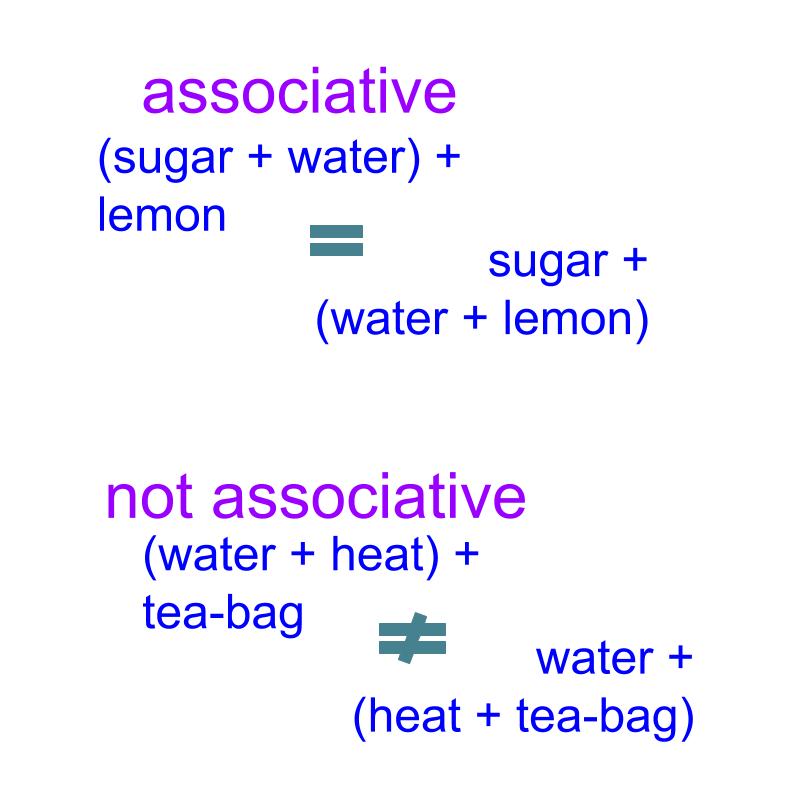
what you'll learn...
Overview
CADI Properties of Addition
» Closure Property
→ if , then
» Commutative Property
→
» Associative Property
→
» Additive Identity Property
→ , such that
» Additive Inverse Property
→ for any such that
» Subtraction is to be handled as additive inverse for the properties
this is important as algebra extensively involves these properties
→ Commutative property involving subtraction : is given as
→ Associative property involving subtraction : is given as
closed means within
Consider the numbers and . Is a real number? "yes, a real number".
That is, for any real numbers , is always a real number
"closure" means closed and not open

Closure Property of Addition: Given , .
Closure Property applied to Subtraction: Given . .
Proof:
Given
as per Additive Inverse Property
as per Closure property of Addition
Using Closure Property: Given , , the subexpression is a real number and can be considered as a single number for any other property.
For example as per commutative property , in which is considered to be a single real number.
Consider the numbers and . Which of the following is true?
or
does not equal to
The answer is "".
Given ;
forward and backward
The word "commute" means "to go to and fro between two places on a regular basis".

Commutative Property of Addition: Given , .
Commutative Property applied to Subtraction: .
Note: Subtraction has to be handled as inverse of addition, and then commutative property can be used.
Using Commutative Property: Given , the expression is simplified to . students may work this out to understand.
with this or that
Given . The expression equals
In the first expression, is added first with and then is added to the result.
In the second expression is added first with and then is added to the result.
Either way, the result is same.
For example,
The word "associate" means 'to connect with; to join'.

Associative Property of Addition: Given . .
Associative Property applied to subtraction: .
Note: Subtraction has to be handled as inverse of addition, and then associative property can be used.
zero
Given . What is
Additive Identity Property: For any , there exists such that .
Additive Identity applied to Subtraction:
Note: and so .
inverse
Given . What is
Additive Inverse Property: For any , there exists such that .
summary
The properties together are named as CADI properties of addition. The abbreviation CADI is a simplified form of the first letters of Closure, Commutative, Associative, Distributive, Inverse, and Identity properties.
Note: Distributive property is shared with multiplication and is explained in the next page.
LPA: CADI properties of Addition
• Closure Property
if , then
• Commutative Property
• Associative Property
• Additive Identity Property
, such that
• Additive Inverse Property
for any such that
Subtraction is to be handled as additive inverse and properties of addition applies to subtraction in the form of addition.
This is important as algebra extensively uses these properties.
→ Commutative property involving subtraction : is given as
→ Associative property involving subtraction : is given as
Outline
The outline of material to learn "Algebra Foundation" is as follows.
Note: click here for detailed outline of Foundation of Algebra
→ Numerical Arithmetics
→ Arithmetic Operations and Precedence
→ Properties of Comparison
→ Properties of Addition
→ Properties of Multiplication
→ Properties of Exponents
→ Algebraic Expressions
→ Algebraic Equations
→ Algebraic Identities
→ Algebraic Inequations
→ Brief about Algebra